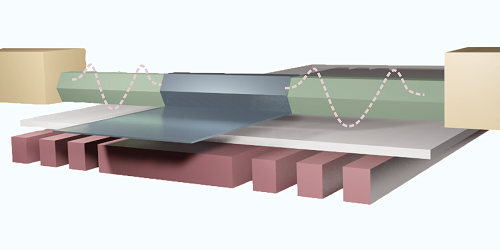Striking a Balance for Quantum Bits
The hypothesized Majorana bound state is a quasiparticle that scientists think could be a building block of a future quantum computer. It is predicted to be hosted by two quantum dots—semiconducting nanocrystals—separated by a narrow superconducting segment, but this can happen only if the processes coupling the dots are perfectly balanced. Now Tom Dvir at the Delft University of Technology in the Netherlands and his colleagues experimentally balance these processes in a hybrid semiconductor-superconductor system [1]. The experiments show no signs of a Majorana bound state, but the researchers plan to use their findings to develop a method to spot this elusive quasiparticle.
The two processes that must be balanced are called elastic cotunneling and crossed Andreev reflection. Elastic cotunneling is the movement of single electrons between the two quantum dots through the intervening superconducting segment. Crossed Andreev reflection describes effects related to the formation of bound states between electrons that enter the intervening segment from each dot.
In Dvir and colleagues’ system, a semiconducting nanowire hosts the quantum dots, and the intervening segment takes the form of a thin superconducting layer above the nanowire’s center. The researchers find that they can change the probabilities of elastic cotunneling and crossed Andreev reflection by varying either the voltage applied to an electrode underneath the system or the orientation of an external magnetic field. By carefully tuning these parameters they successfully balance the two processes. Comparing their data with a theoretical model, they conclude that this controllability comes from a previously unseen type of electron interference.
–Ryan Wilkinson
Ryan Wilkinson is a Corresponding Editor for Physics Magazine based in Durham, UK.
References
- A. Bordin et al., “Tunable crossed Andreev reflection and elastic cotunneling in hybrid nanowires,” Phys. Rev. X 13, 031031 (2023).




